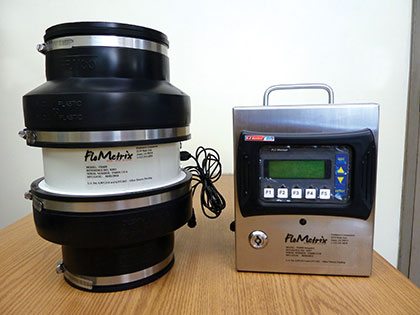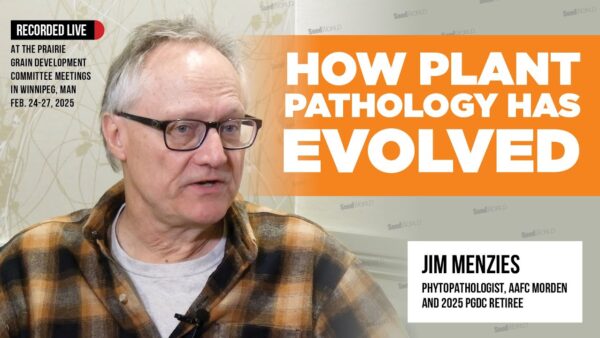New Equipment Promises Even More Efficiency
The seed industry is always looking to improve its processes, and new technologies coming on market are making that possible.
Efficiency. It’s something the seed industry is always chasing, and thanks to emerging equipment technologies, it’s something that’s always within its grasp.
“As an individual company, we’re looking at making improvements to our seed conditioning facility to increase capacity for sizing and grading and so on,” says John Hennenfent, president of the Illinois-based Munson Hybrids and past president of the Independent Professional Seed Association.
Munson Hybrids offers a variety of seed products to its clients including corn hybrids, soybeans and small seeds. The company began in the 1930s and Hennenfent took over in 1999. Technology has changed tremendously, and Hennenfent is always looking to improve the company’s operation processes and is constantly keeping his eye on new technological developments that can help do that.
“One of the things we probably want to include in our new system is equipment that weighs seed as it’s moving across the belt or conveyer. To be able to weigh seed on the fly and not have to weigh whole batches in a bin, to be able to see what your volumes are on the fly,” would be ideal, he says.
The FloMetrix, seen here in its 2,000 bu version, allows flexible placement to capture data not previously available to the processing plant operator.
FloMetrix
One new technology that does exactly that is the FloMetrix, a flow meter that, according to the manufacturer’s website, “allows flexible placement to capture data not previously available to the processing plant operator. The real-time data output allows for quick response and more precise control, which takes much of the guesswork out of the conditioning process.”
Essentially, the FloMetrix does the work of a scale but does it inside of a pipe, weighing materials in real-time without interrupting the flow of seed. “Our dynamic scales provide a simultaneous reading of weight currently passing the scale, as well as the total accumulated weight that has passed the scale. This obviously allows our instruments to control processes such as shutting a control gate after a certain amount of material has passed, or closing or opening a control gate to achieve a desired flow rate,” says Mike Upah of Business Development Services at Iowa State University, which helped develop the technology.
“Customers have stated a desire to monitor the flow coming from shellers and dryers, monitoring the fractions that are coming off the different partitions of density (gravity) tables and also at seed coaters, which allows the flow of seed coatings to be adjusted to match the flow of seed. Our instrument’s small size allows installation at many locations such as sizers and even load-out stations.”
The FloMetrix, manufactured by the Iowa-based FloMetrix Company, does this by accurately measuring total accumulated weight and current flow rates up to 36,000 pounds per hour. FloMetrix Company was founded by Manjit Misra and Yuh-Yuan Shyy, both employees of Iowa State University, in 2011 as a private company using technology licensed exclusively from ISU. “The leaders in the North American seed market have purchased our instruments, and our discussions with them indicate numerous applications within the seed plant. We have also built relationships outside the seed market, including retail seed coating and bulk grain handling,” adds Upah.
To be able to weigh seeds in real-time is something that appeals to those directly involved in the seed industry like Hennenfent. “It would be nice to have ideas of volume as we’re going,” he adds.
Efficiency in Seed Treatment
For Terry Schultz, president of the South Dakota-based Mustang Seeds and second vice president of IPSA, increasing efficiency is very relevant to his company’s seed treatment methods. Mustang Seeds provides small grain seed to area farmers, and Schultz says the On Demand seed treatment system from Bayer SeedGrowth has helped Mustang not only to become more efficient when applying seed treatments, but also enhance its customer service.
“The benefits it has brought are complete accuracy of seed treatment [application] to our customer. It guarantees them the highest accuracy of treatment on their soybean and corn seed that we treat, down to 1/100th of an ounce on a full truckload of seed,” he says. “It’s very clean, environmentally friendly. The seed treatments are all sealed in a keg system so there’s no mixing, no spillage, we know exactly what we’re putting on and the right amounts, and then putting polymers on for safety reasons to keep the treatment on the seed so it doesn’t get into the environment.”
Mustang uses the technology at all three of its locations, which range in size from 10,000 to 40,000 square feet. According to Bayer’s literature, a basic On Demand unit consists of six 15-gallon containers of product metered directly into the treater. “However, the system is flexible and can be expanded to include up to 12 containers. An available flex tank can be used for water rinsing, to adjust conditions of application, and/or to hold inoculants. The inherent flexibility of the On Demand process means seed retailers can formulate custom applications without developing multiple in-can formulations.”
A farmers’ cooperative, AG View FS in Illinois, employs an On Demand system from Bayer SeedGrowth to treat soybean seed. Mark Orr, general manager of AG View FS, says the system allows much faster processing of seed. He tells Bayer: “Quality control is just excellent—the seeds are treated in a very uniform manner with the On Demand system and that has greatly improved the quality of the product we’re providing to our farmers. Then there’s the environmental side—our employees don’t have to handle the chemicals anymore. … So it’s a very seamless process today, whereas before it was much more hands-on. And, it flows so much better.”
Schultz agrees. “It saves on over-treating and ensures the customer is getting exactly what they are ordering and paying for,” he tells Seed World. “It does save on labor because there’s no mixing—the product comes premixed for you, so it’s a good safe system for the employee to the customer to the company that owns it.”
As 2014 begins, Bayer is focusing on the promotion of the On Demand system to retail operations, Kerry Grossweiler, Bayer SeedGrowth equipment and coatings manager, recently told industry media. Some improvements are being made to the technology in 2014, according to Grossweiler, including the new ability to print barcodes.
Remote Sensing
The ability to watch how equipment is working from remote locations is also an emerging desire among seed producers. “That’s something we would consider incorporating as well,” says Hennenfent.
“It guarantees them the highest accuracy of treatment on their soybean and corn seed that we treat, down to 1/100th of an ounce on a full truckload of seed.”
|
It’s an ability offered by precision farming. A leader in the field is AGCO, a farming equipment company based in Georgia that offers telemetry-based tracking. AGCO is behind the AgCommand telemetry app that provides farmers, contractors and managers with instant access to a wide range of information about equipment working in the fields while users are travelling or on the road. The app allows on-the-go system access so you can monitor machinery wherever you are and whenever you want, as well as use the history and report function to run analysis on a specific field, according to AGCO.
“We are seeing an increasing demand for AgCommand telemetry systems, especially by professional growers,” Bernhard Schmitz, commercial manager of AGCO ATS Products, tells Seed World. “By adding additional functionalities and interfaces to telemetric applications, the adoption rate will increase not only for producers, but also business partners in agricultural enterprises.”
AgCommand is part of AGCO’s recently launched precision farming strategy Fuse Technologies, where AGCO aims for a “seamless connection of a farmer’s crop cycle,” says Schmitz. “As the strategy pursues an open approach, the data that is generated can be shared between the different entities that a farmer is dealing with. That means seed recommendations can be applied by the machine. With the AgCommand app, the farmer can track his fleet and the progress of the work in the field.”
As farmers have online access to machine data, they can gather a quick overview of where the machines are and what the progress of the field work is, Schmitz adds, “so they pre-plan the next tasks quicker and manage the uptime more efficiently. If dealers track the service intervals for the machines of their customers, they can guarantee that service is always done in due time. The fuel truck can be directed to vehicles in the field in due time when an alert is sent to the fleet manager or fuel truck driver when a specific fuel level is reached.”
Marc Zienkiewicz











